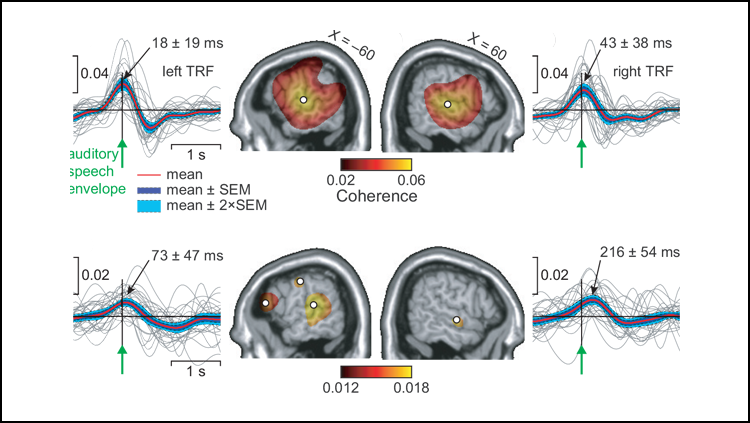Hearing Through Lip-Reading
Brain activity synchronizes with sound waves, even without audible sound, through lip-reading, according to new research published in JNeurosci.
Listening to speech activates our auditory cortex to synchronize with the rhythm of incoming sound waves. Lip-reading is a useful aid to comprehend unintelligible speech, but we still don’t know how lip-reading helps the brain process sound.
Bourguignon et al. used magnetoencephalography to measure brain activity in healthy adults while they listened to a story or watched a silent video of a woman speaking. The participants’ auditory cortices synchronized with sound waves produced by the woman in the video, even though they could not hear it. The synchronization resembled that in those who actually did listen to the story, indicating the brain can glean auditory information from the visual information available to them through lip-reading. The researchers suggest this ability arises from activity in the visual cortex synchronizing with lip movement. This signal is sent to other brain areas that translate the movement information into sound information, creating the sound wave synchronization.
Read the manuscript in JNeurosci: Lip-Reading Enables the Brain to Synthesize Auditory Features of Unknown Silent Speech





















